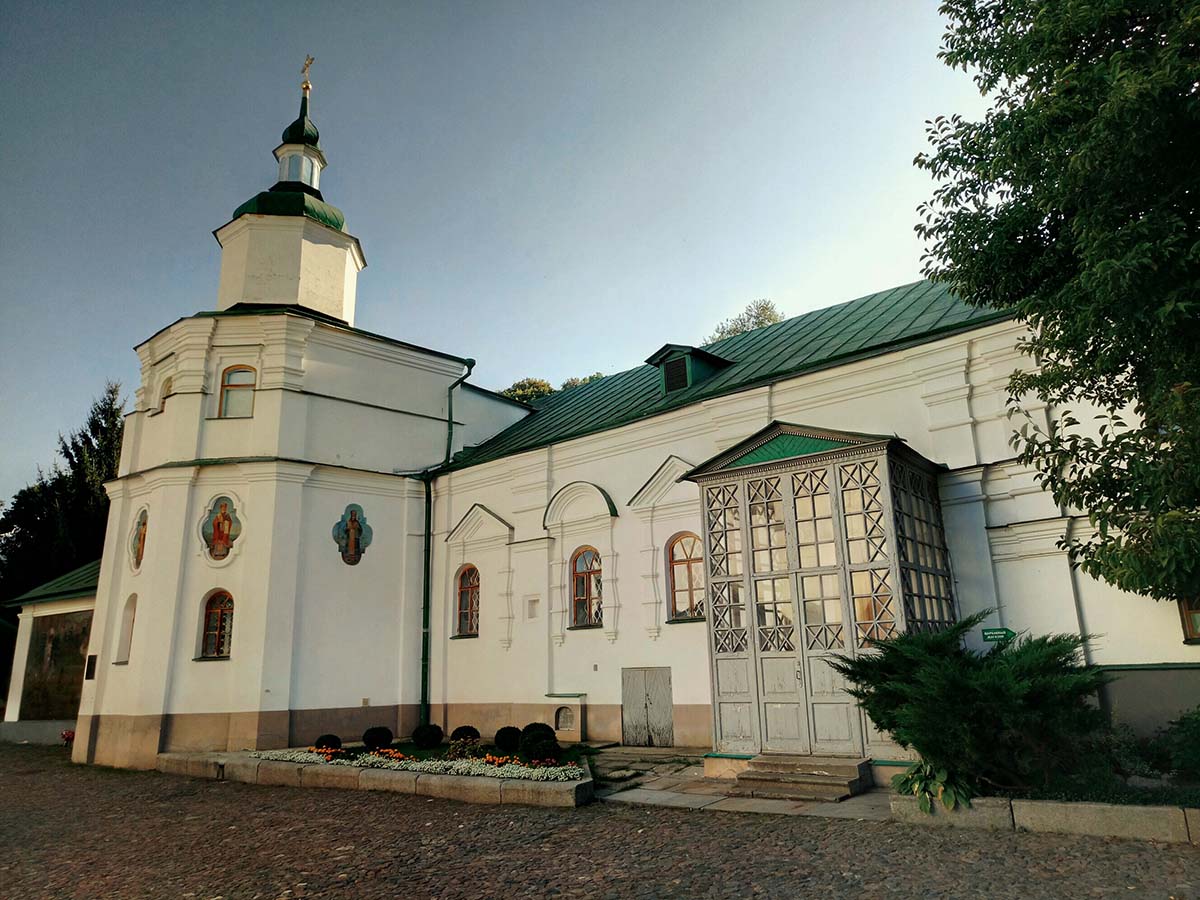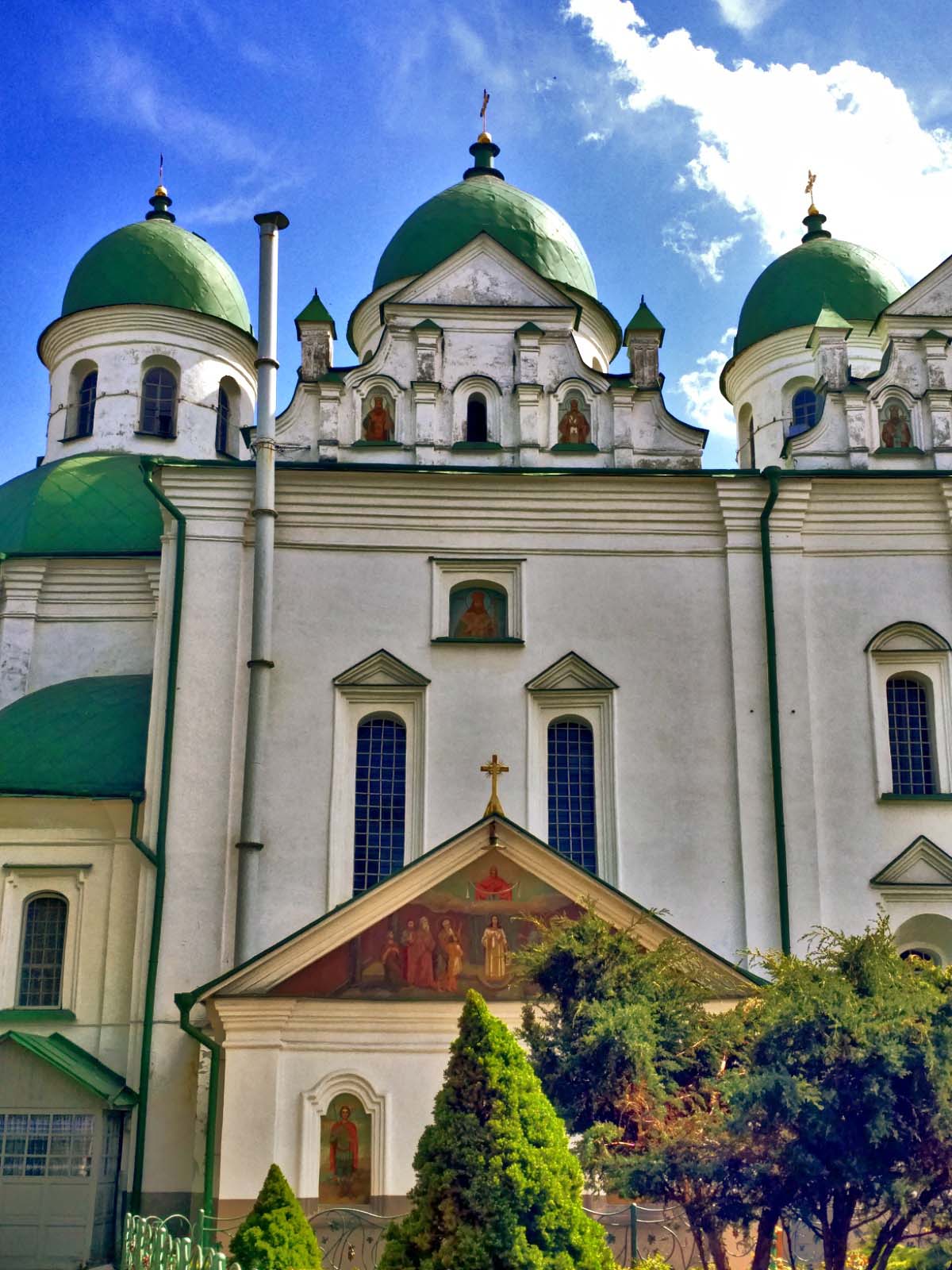From the charter of King Sigismund II Augustus, given on May 17, 1566 to the Kiev voivode, Prince Ostrozhsky, it is known that “the Kiev nunnery of Florovsky on Podol is provided with everything that it had, into the hereditary possession or management of the Kiev archpriest Iakov Gulkevich (who restored this monastery ) with the right to perform divine services in it for himself, his children and descendants who are fit to be priests.” The official painting of Kyiv, compiled in 1682, mentions a convent on Podil with two wooden churches – one in the name of the holy martyr Florus, and the other in the name of the holy martyr Laurus.
Soon after the monastery was transferred to the authority of the Kyiv archpriest, the church and other monastic buildings fell into disrepair and were renovated under Metropolitan Peter Mogila. The financial situation of the Florovsky Monastery remained disastrous until the 18th century. In 1712, Russian Tsar Peter the Great closed the Ascension Monastery for women, which stood on Pecherskaya Mountain, as the space was needed for the construction of an arsenal. The nuns of the Ascension Monastery were transferred to Podol, to the Florovsky Monastery. All the numerous estates of the closed Ascension Monastery were also transferred to the Florov Monastery. Soon after the annexation, construction of a new stone church in the name of the Ascension of the Lord began on the territory of the Florovsky Monastery, which was consecrated on May 2, 1732. After this, the monastery began to be called the Holy Ascension Florovsky.
Until 1811, except for the stone Church of the Ascension of the Lord, all other buildings of the monastery were wooden and burned in the fire of 1811, which destroyed the entire Podol. During the fire, the nuns carried their property into the stone temple, trying to save it from the fire, while 40 nuns suffocated from the smoke. To renew the monastery in 1812, by order of Emperor Alexander the First, 133,000 rubles in banknotes were released from the treasury. With this money, many buildings were erected for the nuns to live in, and in 1818 the construction of stone buildings began. Throughout the 18th and 19th centuries, the monastery was actively expanded and built up, and by the beginning of the 20th century, almost the entire accessible flat area occupied by the monastery was built up with stone buildings, and the entire eastern slope Castle Hill – wooden buildings.
In addition to the Ascension Church, which was preserved after the fire of 1811, by 1917 there were four more in the monastery – the church in the name of the Resurrection of the Lord, the warm Refectory Church in the name of St. Nicholas and the cold temple built over it in the name of the Tikhvin Icon of the Mother of God, the temple in the name of the Icon of the Kazan Mother of God and cemetery church on the top of Castle Hill in the name of the Holy Trinity. In addition, since the end of the 19th century, an almshouse and a hospital existed on the territory of the monastery. In 1929, the monastery was closed by decree of the Soviet government. In 1934, the Church of the Holy Trinity in the monastery cemetery was destroyed. The monastery was revived in 1941, when the Germans entered Kyiv, and since then has not been closed, although it continued to be subjected to various oppressions by the Soviet authorities. In 1960, the Kazan Church was rebuilt into a sewing workshop, and a workshop of the Ukrrestavratsiya association was located in the Resurrection and Refectory Churches. Many cell buildings were taken away from the monastery, and a prosthetic factory was located in some of them. In 1962, the nuns were discharged from the monastery.
But the Florovsky Monastery survived. All churches (except for the destroyed Holy Trinity) were returned to the monastery. Although the prosthetic factory never left the territory of the monastery, the Kazan Cathedral was freed from sewing production and restored. All services take place in the Ascension Cathedral. As in the old days, the Florovsky Monastery is svoekoshtny (non-social). A functioning water source has been preserved.
Where is the Holy Ascension Florovsky Monastery?
Frolovskaya street, 6/8
044 4250181, 4255462
morning service: 08:00, evening: 17:30


